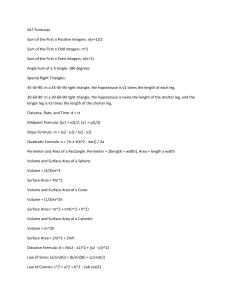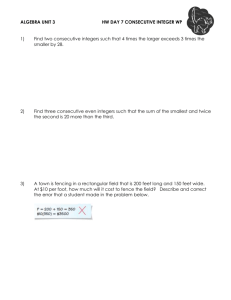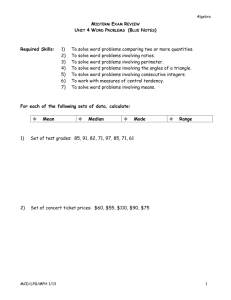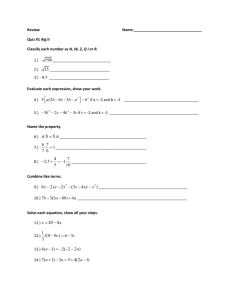Elementary Algebra Word Problems Worksheet with Answers
advertisement
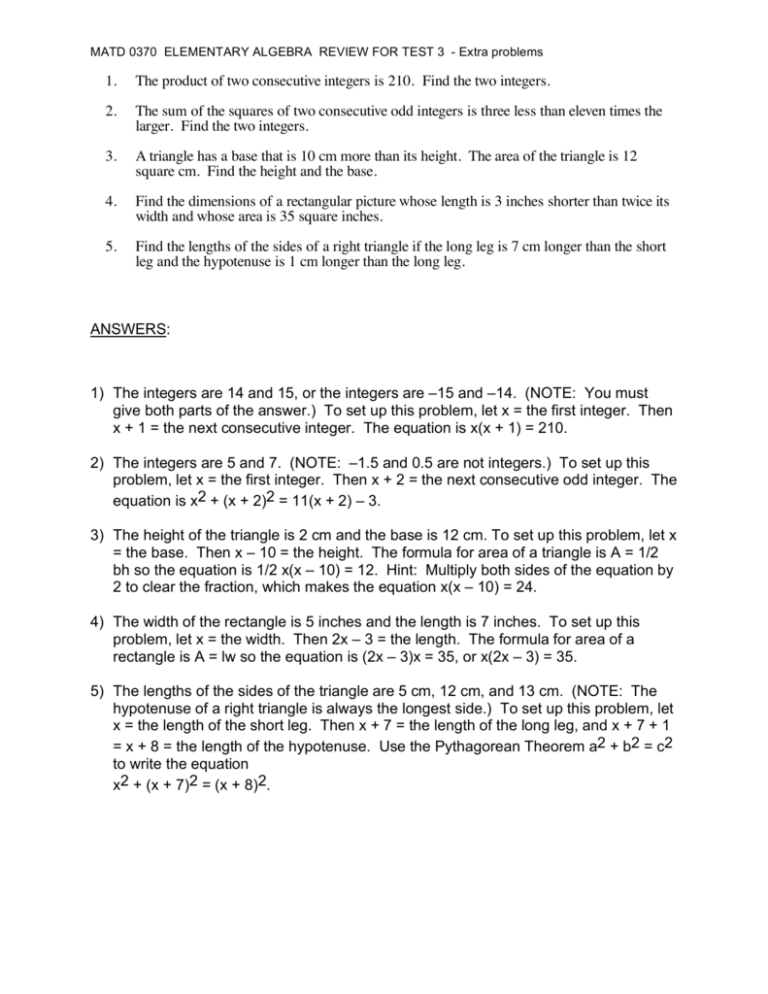
MATD 0370 ELEMENTARY ALGEBRA REVIEW FOR TEST 3 - Extra problems 1. The product of two consecutive integers is 210. Find the two integers. 2. The sum of the squares of two consecutive odd integers is three less than eleven times the larger. Find the two integers. 3. A triangle has a base that is 10 cm more than its height. The area of the triangle is 12 square cm. Find the height and the base. 4. Find the dimensions of a rectangular picture whose length is 3 inches shorter than twice its width and whose area is 35 square inches. 5. Find the lengths of the sides of a right triangle if the long leg is 7 cm longer than the short leg and the hypotenuse is 1 cm longer than the long leg. ANSWERS: 1) The integers are 14 and 15, or the integers are –15 and –14. (NOTE: You must give both parts of the answer.) To set up this problem, let x = the first integer. Then x + 1 = the next consecutive integer. The equation is x(x + 1) = 210. 2) The integers are 5 and 7. (NOTE: –1.5 and 0.5 are not integers.) To set up this problem, let x = the first integer. Then x + 2 = the next consecutive odd integer. The equation is x2 + (x + 2)2 = 11(x + 2) – 3. 3) The height of the triangle is 2 cm and the base is 12 cm. To set up this problem, let x = the base. Then x – 10 = the height. The formula for area of a triangle is A = 1/2 bh so the equation is 1/2 x(x – 10) = 12. Hint: Multiply both sides of the equation by 2 to clear the fraction, which makes the equation x(x – 10) = 24. 4) The width of the rectangle is 5 inches and the length is 7 inches. To set up this problem, let x = the width. Then 2x – 3 = the length. The formula for area of a rectangle is A = lw so the equation is (2x – 3)x = 35, or x(2x – 3) = 35. 5) The lengths of the sides of the triangle are 5 cm, 12 cm, and 13 cm. (NOTE: The hypotenuse of a right triangle is always the longest side.) To set up this problem, let x = the length of the short leg. Then x + 7 = the length of the long leg, and x + 7 + 1 = x + 8 = the length of the hypotenuse. Use the Pythagorean Theorem a2 + b2 = c2 to write the equation x2 + (x + 7)2 = (x + 8)2.
